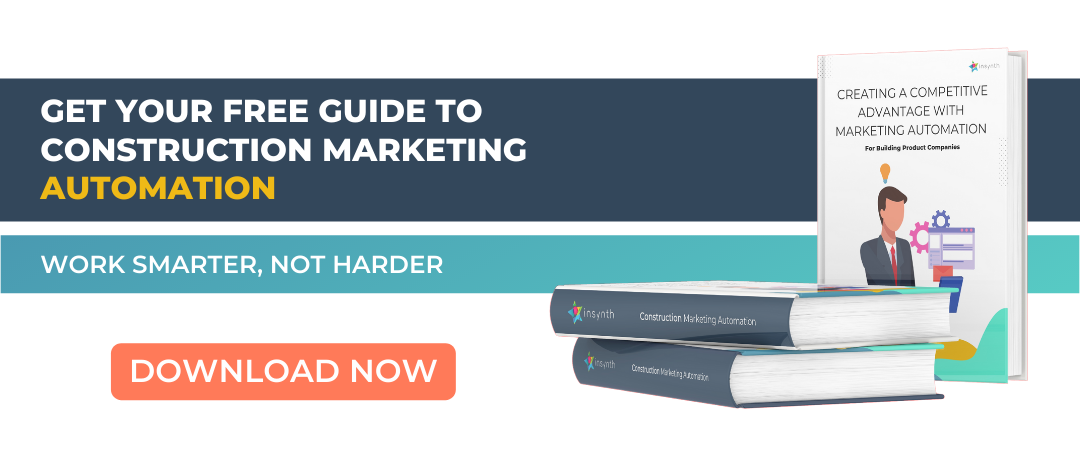5 min read
Construction Marketing Strategy: Segmentation Analysis
![]() Olivia Atkinson
:
05-Dec-2019 16:27:46
Olivia Atkinson
:
05-Dec-2019 16:27:46

Segmentation is often described as a foundational piece; a cornerstone of any marketing strategy.
Correctly segmenting your market can draw focus to where your sales efforts will have the best return. We take a deeper look into segmentation, why it’s important and how many segments you should have.
What Is Segmentation?
Segmentation is about driving the value proposition, around clusters of decision makers, specifiers or potential customers of a product based around their problems/challenges. When first approaching segmentation many believe it’s categorised by metrics such demographics, geographic location. However this is not the case.
If you focused on demographics as a segmentation for example you are unlikely to identify any similar buying behaviour.
Let’s say you’re looking for categorising someone who’s in their 70’s who have a net worth over 10 million and live in the South East of England - would they have the same buying behaviour? No because Prince Charles doesn’t have the same buying behaviour as Ozzy Osbourne.
Segmentation is the process of splitting customers or potential customers in a market into different groups or segments based upon having similar needs.
How Should You Segment Your Market?
People chose between competing products and services based upon their own assessment of what represents the best value for them. In the construction industry that will often derive around selecting a value proposition based around price, performance, availability and often aesthetics.
That doesn’t necessarily mean it has to be the cheapest.
What segmentation does is it allows you to look at what those drivers are whether it be price, performance, durability etc. which are around your constructor value proposition. Let’s get some numbers involved to explain this as clear as possible.
- Segment A are more price sensitive meaning they’re willing to compromise on the aesthetics and the durability of the product. They only need the product to last 2 years and hit performance levels. To deliver this we need to produce a product that is £100.
- Segment B are interested in aesthetics, performance and durability with the product lifetime being 10 years. The people in this segment are prepared to pay £200 for these requirements.
Let’s say you want to meet both groups by producing a middle of the range product that has 5 years durability, meets performance requirements and it looks OK, not as good as the £200 but a bit better than the £100 version. You want to offer this at £150 to try and meet both segments requirements.
Who are you serving?
Actually neither, you’ve missed the mark on both markets. Segment A don’t want to pay that much and Segment B want it to last longer and look a bit nicer. So you end up producing a product that nobody wants. That’s what segmentation is about, it’s understanding which drivers are going to affect different people, it’s not about where they live or how much money they earn.
Should You Adapt Your Value Proposition to Your segments?
If you understand the segments in the market then you’re going to be able to develop value propositions at specific price points, performance levels and durability levels. You’re going to be able to develop your product and your value proposition to suit those segments.
Rather than approaching it as "we’ve got a factory and we make widgets, who wants to buy one?" which is a very production driven approach. Instead if you take it from a marketing position you don’t make anything, you go and find out what people want to buy and then you develop the product they want, that’s segmentation.
That’s what a lot of companies don’t appear to do very well, they don’t have those nuance propositions. An architect on a school project will have very different requirements for flooring, windows and sound proofing to an architect on a project for a high office block in London.
So rather than saying we make great windows, you should be saying we make the perfect window for people specifying student accommodation, which might have a different challenge for the end user. A window for mental health will be completely different to a window for a mass house builder.
Barratts for example would want the windows at a price point, high volume windows to the minimum specification which is designed to last at least 12 years as that’s the NHB specification, that’s the drivers for those guys. Someone who’s designed a new head office for Google in London is completely different and faces different requirements from a product.
You’ve got to appeal to a variety of people and you’re not going to do that with one value proposition. Understand your segments, and then develop your value propositions against each of them.
How Many Segments Should You Have?
If when creating your segments, you come up with 20 segments for example – have you got 20 value propositions? No, because if you understand your segments properly you can quantify the value of those segments. One segment may be worth £10 million a year and another £50 million a year to you, look at the profit in each one.
For example if you’re making 10% on the £50 million segment its worth £5 million to you as a company. On the £10 million segment you may be making 20% profit, so its worth £2 million to you. When you start looking at what market price you can achieve and the margin it generates you can then start to sort them and identify your top value propositions that you’re going to go for.
By not going after everything you focus on what your business is about by going after specific segments. How many can you manage? If you had 5 segments, each worth to you in terms of gross contribution £1 million that might sound appealing to you, generating £5 million gross profit. If you can do that with your existing team then great.
If another one came along and it was worth £3 million gross contribution into the business you then have to make the decision to not do one of the 5 that are worth £1 million each or put in the extra resources to target that segment. This all depends on how entrepreneurial your company is and if they have the capabilities to resource up and have a go a tackling that market.
If not they might try and provide everything at a middle of the road price and end up under-performing. If this is the case it’s better to push out the least performing segment and instead focus at one that’s worth more money to the business.
Your value proposition could be a completely different brand, different website, different team of people. If you look at big groups they’ve got multiple propositions under a group structure.
An example of this is Kingspan, they offer different propositions through different brands.
If you found the information in this post insightful, we recommend you look into some of the most popular articles in the Insynth Blog regarding sales optimisation! Our favourites are:
- 7 Reasons Content Marketing Helps Your Sales Team Succeed
- How To Turn Your Building Product Website Into A Sales Lead Machine
- A Complete Guide to Sales and Marketing Alignment In Construction
- Digital Marketing Tips To Improve Your Construction Sales Leads
Conclusion
To conclude your segmentation analysis it’s worth noting that the construction industry is a slow industry. Compared to say fashion where trends can change weekly, construction trends last a lot longer as they aren’t changed as often.
You should re-evaluate your segments when you have your strategy meeting, whether that’s every 1, 2, 3 or even 5 years; every company is different.
Buyer personas interlink with segmentation very closely focusing on peoples drivers and what the reason is they're purchasing a product, building regulations, trends in design, sustainability, fire protection, recyclable. Buyer personas are so important because if you understand them you understand segmentation.
About Insynth
At Insynth we deliver a predictable flow of leads, customers, and specifications for building product brands through our inbound marketing approach, proven to reach a technically demanding audience.
We use the latest marketing techniques such as construction inbound marketing, to equip building product companies to grow sustainability in this era of digital transformation.
As the only HubSpot certified agency to major in construction marketing. We have a proven formula of bringing a variety of functionalities together including CRM Implementation, Web Design, Sales Automation, SEO, and Email Marketing to achieve your ultimate aim: Growing your business and gaining new specifiers and customers.
